Archive for the ‘New Thinking’ Category
Forgotten Pillars of Personal Growth
 There are a lot of complex self-help programs out there to help us reach our potential. These programs are designed to take us to the next level by building on what we have. And they do help. But implicitly the programs assume we’ve got a foundation in place and it’s solid enough to stand on. But I think our foundation is rickety.
There are a lot of complex self-help programs out there to help us reach our potential. These programs are designed to take us to the next level by building on what we have. And they do help. But implicitly the programs assume we’ve got a foundation in place and it’s solid enough to stand on. But I think our foundation is rickety.
To be what we must be is our responsibility, and if we’re going to get any value from our self-help programs it’s our responsibility to establish the conditions for growth.
Here are three forgotten pillars that must be in place if we’re to grow:
Good sleep habits – most of us our sleep deprived, yet the data is clear that a rested brain thinks better. If we’re to grow, we’ve got to think better, and to think better we need more rest.
Good eating habits – most of us eat poorly. We eat too much which hurts our bodies and we eat too infrequently which hurts our brains. We all know our muscles need calories or they don’t work well, but what we forget is our brain also needs calories. (It’s 2% of our weight but consumes about 20% of our total calories.) And when we eat infrequently our blood sugar drops and so does our brains’ ability to think. If we’re to grow, we need to eat better.
Good fitness habits – most of us don’t exercise daily. Our brain is connected to our body, and they interact. When the muscles are exercised they cause the brain to make chemicals that sooth and calm. When we exercise we have a better attitude, have more stamina, and think better. If we’re to grow, we need more exercise.
The big three are far more powerful than the best self-help scheme, but they’re also far scarier. They’re so scary because they’re easy to measure and completely within our control.
After a one month trial you’ll know if you’ve slept more, worked out more, and ate better. And if you haven’t, you’ll also know who is responsible.
A Race for Learning – Video Training with TED-Ed
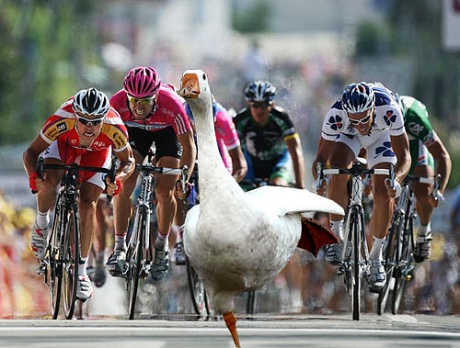 I’ve been thinking about how to use video to train engineers. The trouble with video is it takes time and money to create. But what if you could create lessons using existing video? That’s what the new TED-Ed platform can do. With TED-Ed, any YouTube video can be “flipped” into a customized lesson.
I’ve been thinking about how to use video to train engineers. The trouble with video is it takes time and money to create. But what if you could create lessons using existing video? That’s what the new TED-Ed platform can do. With TED-Ed, any YouTube video can be “flipped” into a customized lesson.
Instead of trying to describe it, I used the new platform to create a video lesson. Click the link below and give it a try. (The platform is still in beta version, so I’m not sure how will go. But that’s how it is with experiments.)
Video lesson: Innovation, Caveman-Style
When answering the questions, it may ask you to sign up for an account. Click the X in the upper right of the message to make it go away, and keep going. If the video does not work at all, poke around the TED-Ed website.
Either way, so we can accelerate our learning and get out in front, please post a comment or two.
Celestial Work and Gravitational Pull
 Meeting agendas are a good idea. They make clear what will happen and they’re time bound. (At least good ones.) They look forward in time and shape what will happen.
Meeting agendas are a good idea. They make clear what will happen and they’re time bound. (At least good ones.) They look forward in time and shape what will happen.
Meeting agendas are created by the organizer so others follow. It’s strange to think about, but from thin air, the organizer congers magic words on a page that shape direction. The agenda sets the agenda and it’s followed. But in truth, agendas are followed because we choose to follow.
But I want to introduce another schema – the work sets the agenda. In this parallel universe, we don’t choose to follow an agenda; we choose to do work so powerful it sets the agenda – work so dense its gravitational field pulls the organization toward it.
I can hear the moans and groans – we can’t choose the work we do. But you can – if your work is good enough. If your work is brighter than the sun, it’s undeniable and, like the sun, cannot be ignored.
I can hear the next round of moans – we can’t do work that good. But you can – if you think you can and you try. (The only way to guarantee you can’t is not to try.)
And the last round of groans – we’ll get fired if we fail. If you’ll get fired for trying to reinvent your universe, you’re working at the wrong place anyway.
If you like to follow agendas, follow them. But if you don’t, do celestial work, and set them.
Not Invented Here
 Not Invented Here (NIH) is ever-present and misunderstood.
Not Invented Here (NIH) is ever-present and misunderstood.
An operational definition of NIH: Group 1 creates new thinking that falls within the official domain of Group 2. When presented with the new thinking, Group 2 rejects it.
It is said Group 2 rejects new thinking because they’re threatened. But that’s too high level to be helpful. To get at the root of it, we need to dig.
First, some NIH:
- Your new thinking is out of alignment with my priorities. Even if I spend a lot of time to understand it, I’m afraid I’ll fail. I reject your new thinking.
- Your new thinking is out of alignment with responsibility. (That thinking should come from me.) If I adopt your new thinking, I’ll look stupid, and I’m afraid I’ll fail. I reject your new thinking.
- Your new thinking is out of alignment with my knowledge. I’m afraid I’ll fail. I reject your new thinking.
- Your new thinking is out of alignment with how I do things. I’m afraid I’ll fail. I reject your new thinking.
Now, some non-NIH :
- My priorities are out of alignment with your new thinking. Though I already have several good ideas that I don’t have time for, can you give me more details so together we can combine the best elements?
- My responsibility is out of alignment with your new thinking, but your new thinking is good. Can you give me more details so together we can investigate possibilities?
- My knowledge is out of alignment with your new thinking. Can you give me more details so we can learn together?
- My way of doing things is out of alignment with your new thinking. Can you give me more details so together we can rethink things?
The key to NIH reduction is to create alignment. With your new thinking not yet fully formed, ask Group 2 for their input. Better yet, ask for their help. Tell them what you don’t know, tell them what you have wrong, tell them how they have a better perspective because it’s their domain, and ask them to help improve it. (All this is best done informally and off-line, at least to start.)
One little-known fact about NIH – it’s pronoun sensitive. Take care to replace I, you, and yours with we.
Curiosity Fuels Creativity
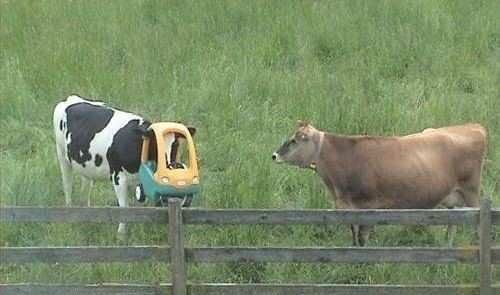 Creativity generates things that are novel and useful. Make them successful, and you’ve got innovation. There can be no innovation without creativity.
Creativity generates things that are novel and useful. Make them successful, and you’ve got innovation. There can be no innovation without creativity.
We associate creativity with innate ability that only some have; with transparent happenings that can’t be codified; with eureka moments that come from the subconscious. If anything defies process, it’s creativity. So let’s not use process to squelch creativity, let’s foster behaviors that spawn creativity.
Curiosity is the kindling for creativity; fan its flames and creativity ignites. There a two parts to curiosity – to see things as they are and to propose what could be.
To see things as they are is to create awareness of what is – awareness of context, or changes in context, awareness of worn paths and anomalies, and awareness at high and low levels of abstraction. It takes a disciplined, uncluttered mind to become aware of a new reality, especially while sitting in the old one. And because uncluttering comes only from slack time, to see things as they are is doubly difficult.
The next part of curiosity is to challenge what is in order to propose what could be. To start, root cause must be understood for the new what is. This requires active rejection of old fundamentals and a deep dive to understand new ones. This is toughest when the old fundamentals have been (and are still) successful. (And it’s doubly tough because it requires slack time.) Curiosity twists, pounds, and bends the new fundamentals into a future reality which culminates with a proposal of what could be. Done right, curiosity’s proposal is borderline heretical.
The good news is we don’t need new people – we have plenty of creative capacity. But here’s the bad news – our process thinking isn’t going to get us there because it’s all about behaviors. It’s time to think about how to change things so we can spend more time on behaviors that generate creativity. But if you must use process thinking, come up with a process that lets us spend more time on creative behaviors
The thinking (and some of the language) for this post came from Diego Uribe, a true thought leader in creativity. Thank you Diego.
Less With Far Less
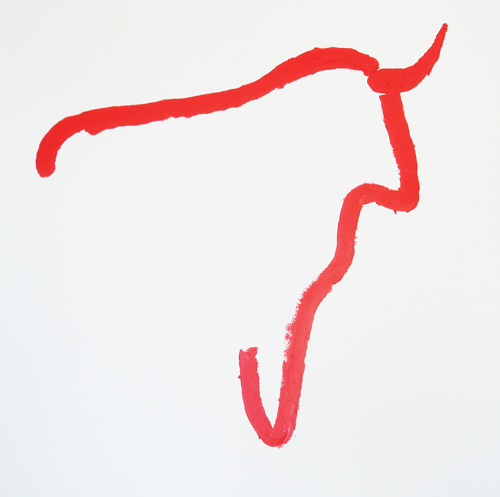 We don’t know the question, but the answer is innovation. And with innovation it’s more, more, more. Whether it’s more with less, or a lot more with a little more, it’s always more. It’s bigger, faster, stronger, or bust. It’s an enhancement of what is, or an extrapolation of what we have. Or it’s the best of product one added to product two. But it’s always more.
We don’t know the question, but the answer is innovation. And with innovation it’s more, more, more. Whether it’s more with less, or a lot more with a little more, it’s always more. It’s bigger, faster, stronger, or bust. It’s an enhancement of what is, or an extrapolation of what we have. Or it’s the best of product one added to product two. But it’s always more.
More-on-more makes radical shifts hard because with more-on-more we hold onto all functionality then add features, or we retain all features then multiply output. This makes it hard to let go of constraints, both the fundamental ones – which we don’t even see as constraints because they masquerade as design rules – and the little-known second class constraints – which we can see, but don’t recognize their power to block first class improvements. (Second class constraints are baggage that come with tangential features which stop us from jumping onto new S-curves for the first class stuff.)
To break the unhealthy cycle of more-on-more addition, think subtraction. Take out features and function. Distill to the essence. Decree guilty until proven innocent, and make your marketers justify the addition of every feature and function. Starting from ground zero, ask your marketers, “If the product does just one thing, what should it do?” Write it down as input to the next step.
Next, instead of more-on-more multiplication, think division. Divide by ten the minimum output of your smallest product. (The intent it to rip your engineers and marketers out of the rut that is your core product line.) With this fractional output, ask what other technologies can enable the functionality? Look down. Look to little technologies, technologies that you could have never considered at full output. Congratulations. You’ve started on your migration toward with less-with-far-less.
On the surface, less-with-far-less doesn’t seem like a big deal. And at first, folks roll their eyes at the idea of taking out features and de-rating output by ten. But its magic is real. When product performance is clipped, constraints fall by the wayside. And when the product must do far less and constraints are dismissed, engineers are pushed away from known technologies toward the unfamiliar and unreasonable. These unfamiliar technologies are unreasonably small and enable functionality with far less real estate and far less inefficiency. The result is radically reduced cost, size, and weight.
Less-with-far-less enables cost reductions so radical, new markets become viable; it makes possible size and weight reductions so radical, new levels of portability open unimaginable markets; it facilitates power reductions so radical, new solar technologies become viable.
The half-life of constraints is long, and the magic from less-with-far-less builds slowly. Before they can let go of what was, engineers must marinate in the notion of less. But when the first connections are made, a cascade of ideas follow and things spin wonderfully out of control. It becomes a frenzy of ideas so exciting, the problem becomes cooling their jets without dampening their spirit.
Less-with-far-less is not dumbed-down work – engineers are pushed to solve new problems with new technologies. Thermal problems are more severe, dimensional variation must be better controlled, and failure modes are new. In fact, less-with-far-less creates steeper learning curves and demands higher-end technologies and even adolescent technologies.
Our thinking, in the form of constraints, limits our thinking. Less-with-far-less creates the scarcity that forces us to abandon our constraints. Less-with-far-less declares our existing technologies unviable and demands new thinking. And I think that’s just what we need.
Creativity’s Mission Impossible
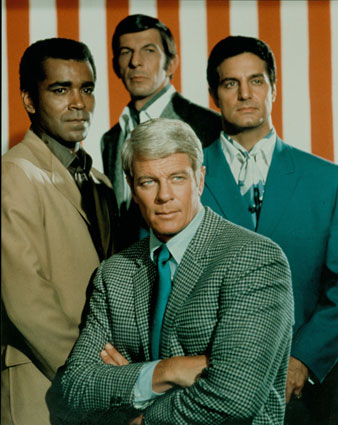 Whether it’s a top-down initiative or a bottom-up revolution, your choice will make or break it.
Whether it’s a top-down initiative or a bottom-up revolution, your choice will make or break it.
When you have the inspiration for a bottom-up revolution, you must be brave enough to engage your curiosity without self-dismissing. You’ll feel the automatic urge to self-reject – that will never work, too crazy, too silly, too loony – but you must resist. (Automatic self-rejection is the embodiment of your fear of failure.) At all costs you must preserve the possibility you’ll try the loony idea; you must preserve the opportunity to learn from failure; you must suspend judgment.
Now it’s time to tell someone your new thinking. Summon the next level of courage, and choose wisely. Choose someone knowledgeable and who will be comfortable when you slather them with the ambiguity. (No ambiguity, no new thinking.) But most importantly, choose someone who will suspend judgment.
You now have critical mass – you, your partner in crime, and your bias for action. Together you must prevent the new thinking from dying on the vine. Tell no one else, and try it. Try it at a small scale, try it in your garage. Fail-learn-fail until you have something with legs. Don’t ask. Suspend judgment, and do.
And what of top down initiatives? They start with bottom-up new thinking, so the message is the same: suspend judgment, engage your bias for action, and try it. This is the precursor to the thousand independent choices that self-coordinate into a top-down initiative.
New thinking is a choice, and turning it into action is another. But this is your mission, if you choose to accept it.
I will be holding a half-day Workshop on Systematic DFMA Deployment on June 13 in RI. (See bottom of linked page.) I look forward to meeting you in person.
When It’s Time For a New Cowpath
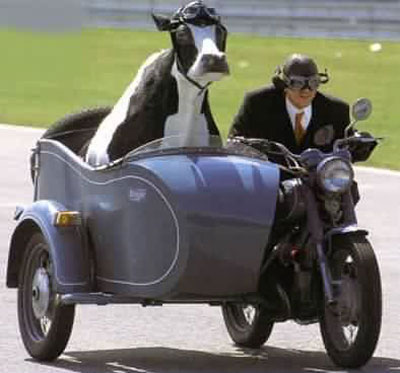 Doing new things doesn’t take a long time. What takes a long time is seeing things as they are. Getting ready takes time, not doing new. Awareness of assumptions, your assumptions, others’ assumptions, the company’s – that’s critical path.
Doing new things doesn’t take a long time. What takes a long time is seeing things as they are. Getting ready takes time, not doing new. Awareness of assumptions, your assumptions, others’ assumptions, the company’s – that’s critical path.
An existing design, product, service, or process looks as it does because of assumptions made during long ago for reasons no longer relevant (if they ever were). Design elements blindly carried forward, design approaches deemed gospel, scripted service policies that no longer make sense, awkward process steps proceduralized and rev controlled – all artifacts of old, unchallenged assumptions. And as they grow roots, assumptions blossom into constraints. Fertile design space blocked, new technologies squelched, new approaches laughed out of town – all in the name of constraints founded on wilted assumptions. And the most successful assumptions have the deepest roots and create the deepest grooves of behavior.
Cows do the same thing every day. They wake up at the same time (regardless of daylight savings), get milked at the same time, and walk the same path. They walk in such a repeatable way, they make cowpaths – neat grooves walked into the landscape – curiously curved paths with pre-made decisions. No cow worth her salt walks outside the cowpath. No need. Cows like to save their energy for making milk at the expense of making decisions. If it was the right path yesterday, it’s right today.
But how to tell when old assumptions limit more than they guide? How to tell when it’s time to step out of the groove? How to tell a perfectly good cowpath from one that leads to a dry watering hole? When is it time to step back and create new history? Long ago the first cow had to make a choice, and she did. She could have gone any which way, and she did. She made the path we follow today.
With blind acceptance of assumptions, we wither into bankruptcy, and with constant second-guessing we stall progress. We must strike a balance. We must hold healthy respect for what has worked and healthy disrespect for the status-quo. We must use forked-tongue thinking to pull from both ends. In a yin-yang way, we must acknowledge how we got here, and push for new thinking to create the future.
Organizationally Challenged – Engineering and Manufacturing
Our organizations are set up in silos, and we’re measured that way. (And we wonder why we get local optimization.) At the top of engineering is the VP of the Red Team, who is judged on what it does – product. At the top of manufacturing is the VP of the Blue Team, who is judged on how to make it – process. Red is optimized within Red and same for Blue, sometimes with competing metrics. What we need is Purple behavior.
Here’s a link to a short video (1:14): Organizationally Challenged
And embedded below:
Let me know what you think.
How to help engineers do new.
 Creating new products that provide a useful function is hard, and insuring they function day-in and day-out is harder. Plain and simple, engineering is hard.
Creating new products that provide a useful function is hard, and insuring they function day-in and day-out is harder. Plain and simple, engineering is hard.
Planes must fly, cars must steer, and Velcro must stick. But, at every turn, there are risks, reasons why a new design won’t work, and it’s the engineer’s job to make the design insensitive to these risks. (Called reducing signal to noise ratio in some circles.) At a fundamental level engineering is about safety, and at a higher level it’s about sales – no function, no sales.
That’s why at every opportunity engineers reduce risk . (And thank goodness we do.) It makes sense that we’re the ones that think things through to the smallest detail, that can’t move on until we have the answer, that ask odd questions that seem irrelevant. It all makes sense since we’re the ones responsible if the risks become reality. We’re the ones that bear ultimate responsibility for product function and safety, and, thankfully, it shapes us.
But there’s a dark side to this risk reduction mindset – where we block our thinking, where we don’t try something new because of problems we think we may have, problems we don’t have yet. The cause of this innovation-limiting behavior: problem broadening, where we apply a thick layer of problem over the entirety of a new concept, and declare it unworkable. Truth is, we don’t understand things well enough to make that declaration, but, in a knee-jerk way, we misapply our natural risk reduction mindset. Clearly, problems exist when doing new, but real problems are not broad, real problems are not like peanut butter and jelly spread evenly across the whole sandwich. Real problems are narrow; real problems are localized, like getting a drip of jelly on your new shirt.
How to get the best of both worlds? How to embrace the risk reduction mindset so products are safe and help engineering folks to try something radically new? To innovate?
We’ve got the risk reduction world covered, so it’s all about enhancing the try-something-new side. To do this we need to combat problem broadening; we need a process for problem narrowing. With problem narrowing, engineers drill down until the problem is defined as the interaction of two elements (the jelly and your shirt), defined in space (the front of your shirt) and time (when the knife drops a dollop on your shirt). Where problem broadening tells us to avoid making peanut butter and jelly sandwiches altogether (those sandwiches will always dirty our shirts), problem narrowing tells use to put something between the knife and the front of your shirt, or to put on your new shirt after you make your sandwich, or to do something creative to keep the jelly away from our shirt.
Problems narrow as knowledge deepens. Work through your fears, try something new, and advance your knowledge. Then define your problems narrowly, and solve them.
Innovate.
It’s all about judgement.
 It’s high tide for innovation – innovate, innovate, innovate. Do it now; bring together the experts; hold an off-site brainstorm session; generate 106 ideas. Fast and easy; anyone can do that. Now the hard part: choose the projects to work on. Say no to most and yes to a few. Choose and execute.
It’s high tide for innovation – innovate, innovate, innovate. Do it now; bring together the experts; hold an off-site brainstorm session; generate 106 ideas. Fast and easy; anyone can do that. Now the hard part: choose the projects to work on. Say no to most and yes to a few. Choose and execute.
To choose we use processes to rank and prioritize; we assign scores 1-5 on multiple dimensions and multiply. Highest is best, pull the trigger, and go. Right? (Only if it was that easy.) Not how it goes.
After the first round of scoring we hold a never-ending series of debates over the rankings; we replace 5s with 3s and re-run the numbers; we replace 1s with 5s and re-re-run. We crank on Excel like the numbers are real, like 5 is really 5. Face it – the scores are arbitrary, dimensionless numbers, quasi-variables data based on judgment. Face it – we manipulate the numbers until the prioritization fits our judgment.
Clearly this is a game of judgment. There’s no data for new products, new technologies, and new markets (because they don’t exist), and the data you have doesn’t fit. (That’s why they call it new.) No market – the objective is to create it; no technology – same objective, yet we cloak our judgment in self-invented, quasi-variables data, and the masquerade doesn’t feel good. It would be a whole lot better if we openly acknowledged it’s judgment-based – smoother, faster, and more fun.
Instead of the 1-3-5 shuffle, try a story-based approach. Place the idea in the context of past, present, and future; tell a tale of evolution: the market used to be like this with a fundamental of that; it moved this way because of the other, I think. By natural extension (or better yet, unnatural), my judgment is the new market could be like this… (If you say will, that’s closeted 1-3-5 behavior.) While it’s the most probable market in my judgment, there is range of possible markets…
Tell a story through analogy: a similar technology started this way, which was based on a fundamental of that, and evolved to something like the other. By natural evolution (use TRIZ) my technical judgment is the technology could follow a similar line of evolution like this…. However, there are a range of possible evolutionary directions that it could follow, kind of like this or that.
And what’s the market size? As you know, we don’t sell any now. (No kidding we don’t sell any, we haven’t created the technology and the market does not exist. That’s what the project is about.) Some better questions: what could the market be? Judgment required. What could the technology be? Judgment. If the technology works, is the market sitting there under the dirt just waiting to be discovered? Judgment.
Like the archeologist, we must translate the hieroglyphs, analyze the old maps, and interpret the dead scrolls. We must use our instinct, experience, and judgment to choose where to dig.
Like it or not, it’s a judgment game, so make your best judgment, and dig like hell.
 Mike Shipulski
Mike Shipulski